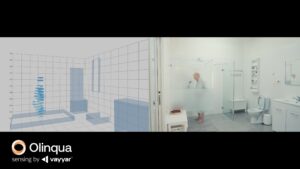There’s no denying hospitals are working environments like no other. Between tense surgeries, wait times, serious injuries or illnesses, intense workloads, and even death, emotions often run high and occasionally boil over mentally and physically.
In more recent times, the pressure on healthcare professionals has further intensified due to COVID-19, mass staff shortages, budgetary challenges, an aging population, and GP unavailability.
What does this all result in? Healthcare workers are increasingly being harassed and even assaulted by patients and the patient’s loved ones.
Healthcare staff safety is a growing problem in our country and worldwide. Daily, our frontline workers are placed in difficult and challenging situations as they face patients and their family networks who are in heightened emotional states due to uncertainty and fear.
Reducing these challenging situations for frontline healthcare workers is no easy task and not only requires action on many different fronts but also counts on public awareness.
What does healthcare look like in Australia?
According to the Australian Institute of Health and Welfare, in 2020-21, just under 500,000 people were employed full-time in Australia’s more than 1,300 hospitals. Of those, the vast majority (422,000) worked in public hospitals, while around 70,000 worked in private hospitals, where visiting medical specialists often provide their services.
Despite the variety of professions within any hospital, nurses make up two of every five full-time employees in public hospitals, 52% of full-time staff in private free-standing hospitals, and 56% of full-time staff in other private hospitals. When looking at the 2020 Aged Care Workforce Census Report, aged care is the second biggest employer of nurses in Australia, making up 23% of the direct care working staff cohort.
Past incidents of healthcare workers being at risk
Thousands of incidents occur across Australia annually, with assaults increasing steadily over recent times.
In 2019, ABC reported ‘the number of nurses assaulted in Victoria health settings increased by 60 per cent’ in the three years prior. Queensland and NSW echoed these results, with a 48 per cent and 44 per cent rise, respectively.
WA Today published an article in the same year, reporting 800 nurses were assaulted in the first six months of 2018 alone.
Cases of assault have also been on the rise in South Australia, where SA Health recorded a 47 per cent jump in reported aggressive and violent behaviours against healthcare staff between 2017 and 2021. It showed more than 4,000 incidents in 2021 and steady increases year-on-year.
Overall, this suggests between 1 and 2 per cent of healthcare staff are at risk of being attacked or experiencing a similar incident within their workplace each year.
Olinqua’s own CNIO, Sarah Hughes, shared that “when a nurse goes through training, it is ingrained that they are putting themselves at risk.”
While the violence itself is of significant concern, perhaps equally concerning is the rate at which it has risen and the minimal attention given to this crisis by an Australian public who count on their hospitals to effectively attend to more than 22,000 emergency presentations every day.
Who’s responsible?
The onus of protecting frontline healthcare workers lies with various departments, as well as the executive leadership teams who have a responsibility to provide an environment that protects their workers – as legislated under Workplace Health and Safety Acts.
The government
It can be argued that governments’ spending and services repeatedly failing to keep up with demand and the resulting understaffing could be a significant factor in patients and their networks not being attended to as quickly as would be expected, tensions rising, and aggressive responses by people who are afraid, in pain or in need.
Similarly, budgetary challenges continue to impact Australian hospitals, including security services and investment in relevant technology. This is particularly the case for hospitals that are activity-based funded.
The hospitals
As the leaders of hospitals or residential healthcare settings, hospital administrators have a duty of care to look after their staff and provide them with the safest working conditions possible.
But how much is really in their control when it comes to the vast web of different people who work within and visit their hospitals for various reasons?
While they must adhere to regulations and meet requirements, is there a reality where they can also control the nature of every person who walks through their hospital’s front doors?
The patients and visitors
Perhaps, most seemingly accountable for their own behaviour are the patients themselves or their family and friends at the hospital to support them. But when significant emotion or stress is at play, how accountable are they?
From a notable increase in the volume of people suffering from complex mental health conditions, to 1 in 20 Australians having an addiction or substance abuse problem, to trauma and the emotional response to tension, fear and shock, there are many contributing factors to patient behaviour.
Looking at patients in context and understanding they are not just bringing their illness or injury to the hospital, but a range of other influencing factors, makes it clear that while they may be instigating the violence, the reaction isn’t always something that is within their control.
The verdict
The fact is none of these groups is solely responsible for reducing and/or eliminating violence against healthcare workers, but they all play a part.
Ultimately, when all factors are combined – insufficient budgets, understaffing, inability to implement technology and failure to do so, patient and family circumstances, among many other factors – what presents is an unpredictable environment for anyone to work in.
How do we protect our frontline workers?
There is no denying that we can’t stop the assault from happening every time. But we can stop it some of the time. And where we can’t, we can minimise its impact.
Education
As in any situation where behaviour is an issue, education plays an important role in enabling and empowering change.
Currently, many hospital staff receive training – whether in their formal qualifications, upskilling or at work – to manage situations of threatening behaviours. They learn how to identify the signs that a problem is arising and tension is increasing, and they are taught how to de-escalate the situation, or at the very least, not amplify it.
While a lot of training still takes place using traditional methods – classroom-based, lecture-based, role-play-based – some hospitals are changing how they approach it, incorporating virtual reality tools to allow for the training to be more engaging and open up new dialogues.
There is further work to do here, but if the first steps are anything to go by, the quality of training for our frontline healthcare workers, regarding their own safety, is on the rise.
Technology
Over recent years, staff duress technology has become a booming industry, and rightfully so. Its innovation enables safeguarding the well-being of some of our most valuable members of society.
Different solutions have been introduced to cater to the varying needs of healthcare settings.
Fixed duress systems
Still the most common in Australian hospitals, fixed duress alarms, as described, are buttons fitted to designated locations throughout hallways, patient rooms and other shared areas.
Connected to the hospital’s network, when the button is activated by a staff member, it will trigger a Code Black alert. While all hospital processes and procedures differ, in most cases, a Code Black will alert security, at a minimum, and have them at the scene quickly to assist the person in need.
The challenge with this solution is the location of the alarms. While they generally are quite visible, in a situation of violence, a staff member, firstly, may not have the opportunity to look around to find the nearest button (or may not even remember where they are), and secondly, may not be able to reach it once they locate it.
Buttons are often placed several metres apart at minimum, or for example, a patient room may only contain one button, so being able to activate the Code Black is very much dependent on the level of violence, any impacts it has on mobility and the location of the hospital worker compared to the button and their attacker.
Mobile duress – physical activation
Mobile duress takes the concept of the duress buttons and makes them accessible anywhere the hospital worker is because they are carried everywhere with them.
Coming in many forms, from pull tags to buttons, the devices have been created with both safety and security in mind. While they can be activated simply – at a click or a pull – they are not located around the neck, for example, where they can also become a strangulation device.
Like fixed duress, when activated, they initiate a Code Black procedure.
At Olinqua, we offer both mobile and fixed point duress alarms – providing increased security measures for staff high-risk hospital departments, where heightened concerns for staff safety are often present.
Mobile duress – voice activation
In more recent times, voice-activated mobile duress systems have started to be implemented in hospitals throughout the world. Often programmed with a specific command so they won’t be triggered by accident, the devices are compact, easy to carry and, again, are designed not to become a strangulation device.
While the technology is still developing and options are currently limited, upcoming advancements will potentially make these a staple in hospitals of the future.
Digital twin and integration
Underpinning all of these duress solutions, turning them from an accessory into a potential lifesaver, is the technology that connects them back into the broader hospital network.
Notably, powerful integration engines like Olinqua, can bring together systems and devices from right throughout hospitals to enable the collation of data in one place. The data can be used by machines to rapidly analyse a situation and deliver the right response, in a fraction of a second – much faster than human intervention.
When duress alarms are triggered, these platforms connect A to B and alert security, lock doors, call specific staff or undertake any other set of steps they have been programmed to deliver.
One specific output they also inform is the hospital’s digital twin – an onscreen replica of the hospital and its systems.
When mobile duress buttons are used, real-time location data can be sent to the hospital’s platform and delivered on a map of the hospital to help responders know exactly where to find the staff member in need.
Our Digital Twin platform create a virtual model that is the exact counterpart (or ‘twin) of a physical thing – whether that’s an entire hospital, a single patient or an anatomical structure. The Olinqua platform bridges the gap between here-and-now actionable events and historical data so that every observable event occurring can be assessd for business meaning and transformed into business outcomes.
What comes next?
Staff safety is an incredibly important issue for hospitals and healthcare settings and one that requires attention.
As demand on hospitals continues to increase, the need to introduce new efficiencies that reduce the burden on staff, both physically and in terms of cognitive load, will also increase.
Hospitals and other healthcare settings are now much more rapidly recognising this, and an era of digital transformation, or digital optimisation, is underway.
While the hospital of today continues to work with disparate systems, slowly but surely, as platforms offering true and agnostic interoperability emerge, they are turning disconnection into connection, disjointed data into accurate and useful insights, and enabling much more effective action and response to any situations that arise within their walls.
More on staff safety
If you want to find out more and how Olinqua can support your hospital, get in touch with us today!



